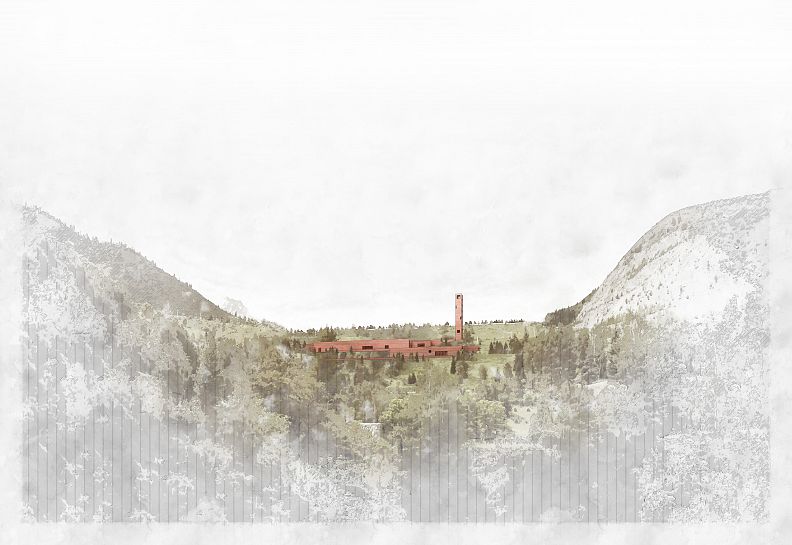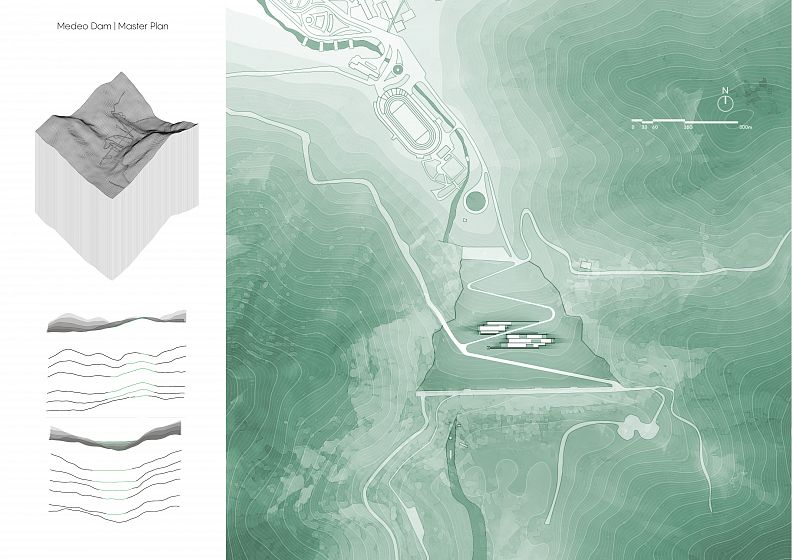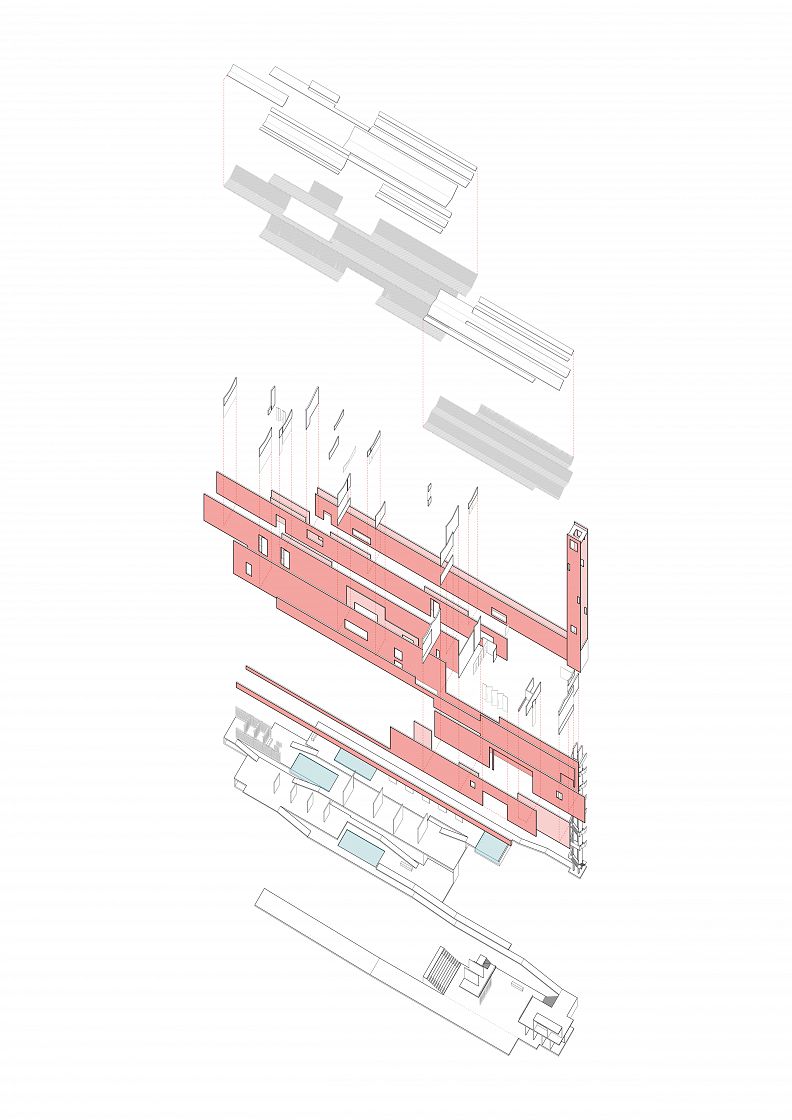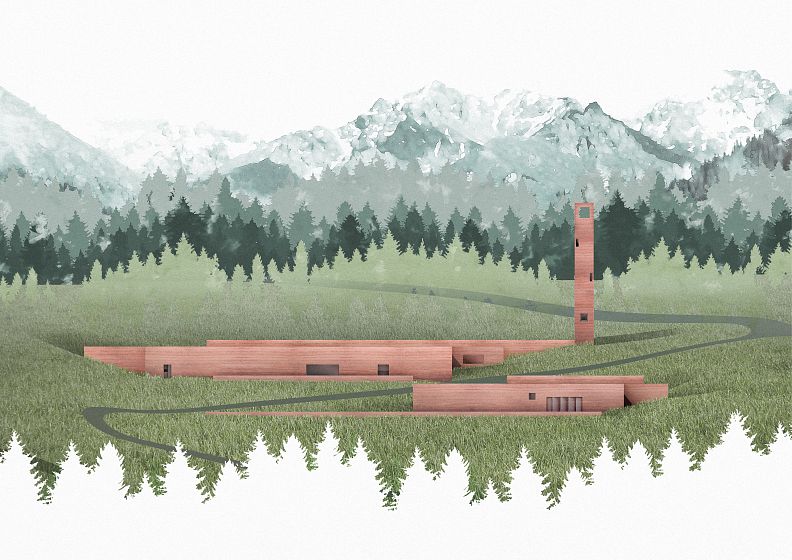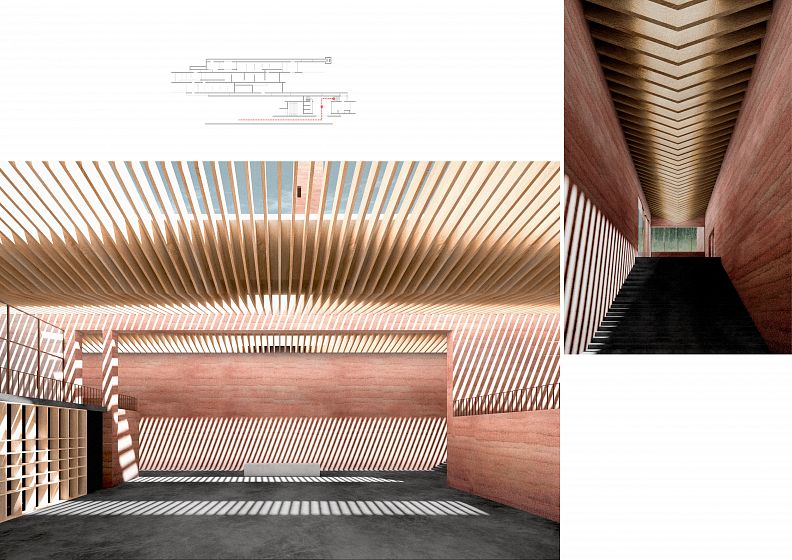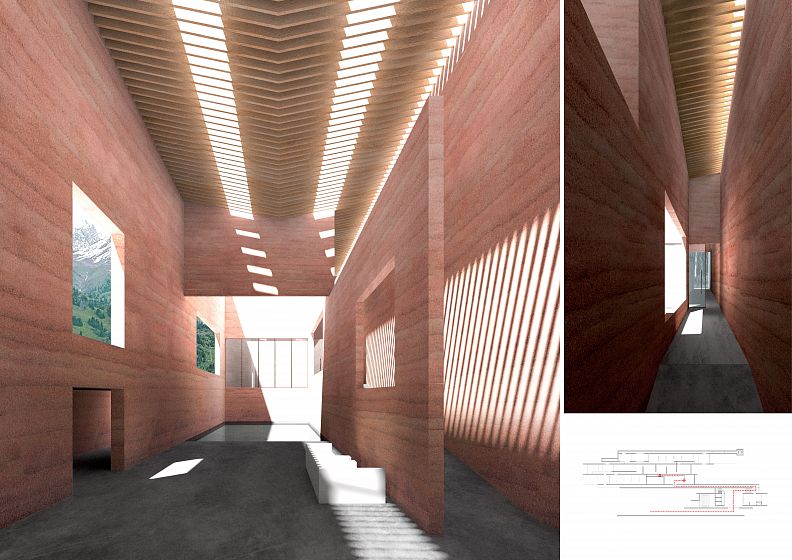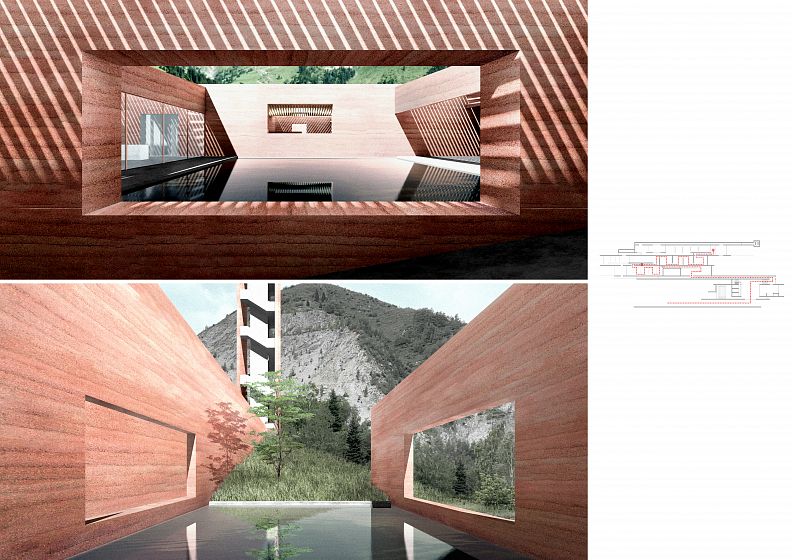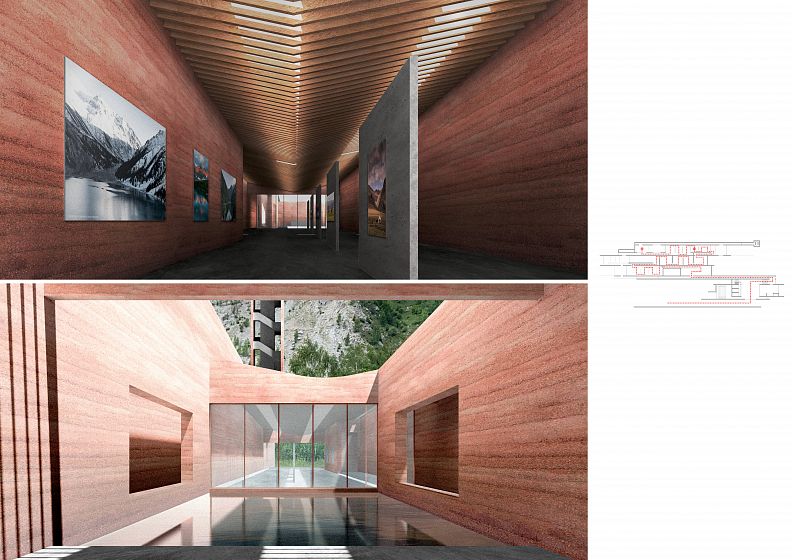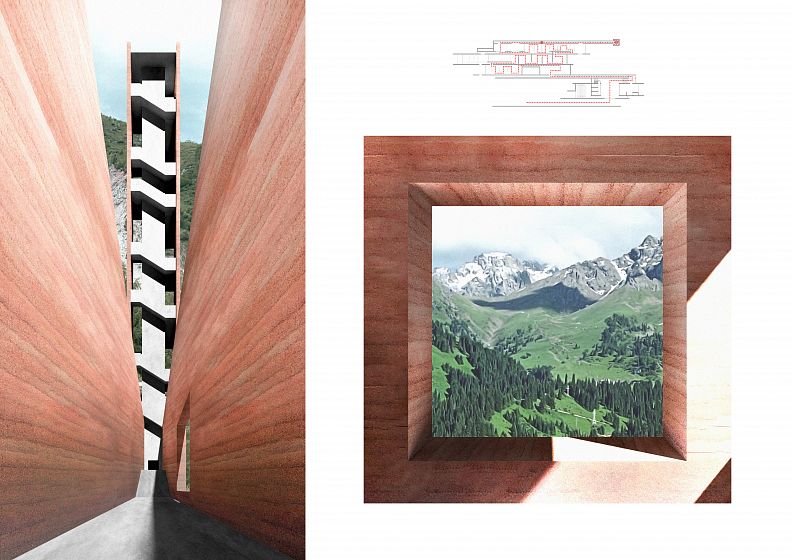Narrative of the Landscape

Idea projektu
Architecture sets the stage for the slow formation of new communities and the preservation of existing ones by teaching people through the experience of their ancestors.
In the time of Globalization developing countries following the experience of developed countries. Architecture is not an exclusion. Since Kazakhstan is located in the center of the Eurasian continent, historically it was influenced by different cultures, such as Mongols, during the time of Genghis Khan; Russian Empire, and the USSR in the time of Soviet Union. And not so long ago in 1991 the country declared its independence as a democratic constitutional unitary republic. After Independence attained by Kazakhstan, in the cultural field there was raising the issue of national identity. It turned out that Kazakh identity was constituted from the outside. To a great extent, it was determined by the Russian imperial and later Soviet influence.
Now the traditional way of life of the Kazakhs is closely connected with the globalized urban every day of Kazakhstan. Tense relations between a human being and nature, get more complicated by uneasy and sometimes traumatic encounters with other civilizations - no matter Christian or Islamic. Thus, Kazakh internationalism and cultural exchange turn into pragmatic utilization and near-religious cult of the ‘foreign’.
Then, what are the components of the new ‘non-souvenir’ identity in the Architectural field?
Historically as a Nomadic culture Kazakh people had a close relationship with nature. However, in the 21st century when the significance of the environment has never been so important, we are losing that connection with the natural environment. In the modern time when our relationship with nature is under scrutiny, there is a need for an alternative approach to building within the landscape, that needs a level of sensitivity and respect for nature. The aim of the project is Architecture inspired by nomadic culture, which revives a dialog between human and nature, and becomes the bridge between the past and present that encourages innovation in the future.
Popis projektu
PROJECT OBJECTIVES:
- Identity of the City. Representation of Kazakhstani Cultural Identity through Architecture on the example of Almaty city.
- Revitalization of the region. Re-establishment historical and cultural meaning of the Medeu Dam and Medeu Region.
- Tourist attraction. Combining environmental aspects with existing tourist potential.
- A place for culture and education. Raise awareness of the need for preservation, care, and conservation of the natural environment.
- Reconnection with nature. Creation of the narrative of the place. Revealing the beauty of Almaty nature through the architecture in harmony with the mountain landscape and ecosystem of the region.
SITE ANALYSIS:
Almaty is the first capital of the independent Republic of Kazakhstan, the cultural and educational center of the country, and the city with unique nature. The city is located in an area of extensive geologic risk, subject to both earthquakes and mudslides. In the history of Almaty, there were several cases of disastrous mudflows that had lead to taking action against natural hazards. One of those actions was constructing the Medeu Dam. The Medeu Mudflow Control Dam is a dam across the Medeu Valley south-east of Almaty, designed to protect the city from devastating debris flows (or mudflows). Nowadays, the danger of mudslides is reduced to a minimum, however, the place that has a memory of the tragic events related to natural disasters, still be an important destination for citizens and tourists. The site of Medeu Dam lies in the Medeu Valley located in the territory of Trans-Ili Alatau (part of the Northern Tian Shan mountain system). The site is a part of Ile-Alatau National park, a place that is rich with natural sights and has become an attraction for tourists.
PROGRAM: The architectural proposal consists of 3 buildings - visitor centre, natural museum, and observation tower. Visitor Centre was chosen as a typology of architecture that aims to express the identity of the place, preserve the historical meaning, and educate people. As a tourist destination visitor centre speaks to the basic tourist needs - the desire to experience culture, history, and nature in person, to create an experience they will long remember. The Museum of Nature introduces the natural richness of Kazakhstan and allows experiencing nature through the human senses.
CONCEPT:
NOMADIC JOURNEY.
Nomadism, way of life of peoples who do not live continually in the same place but move cyclically or periodically following the change of seasons.
Originally Kazakh culture is based on nomadism that strongly depends on the natural environment. Since the old times, nature has formed the lifestyle and beliefs of the people, this strong connection to nature can be summarized to 3 main features.
- Sky or Tengri as a symbol of freedom. Strong relationships with the sky
- Journey. Relationship with the land, the idea of the home as the land itself.
- 4 seasons. The art of life through the four seasons.
The idea is revealing traditions of nomadic journey and experience of nature by creating a narrative of the landscape through the architectural experience. The narrative of the landscape defined by the passage through the spaces that reveal features of the natural world through the mediation of architecture. The project exists in a middle zone between architecture, sculpture, and landscape design.
RETURN TO NATURE.
A feature of the worldview of the Kazakh peoples is a belief of nature and worship of nature. The belief was a deification of nature, as a universe, the source of all living and non-living things. Tengrism as a worldview system can be understood through natural philosophy and the religion of nature. Tengrism, the religion of nature assumes the unity of the natural and the spiritual, the spokesman of which is a human. In Tengrism the main beliefs were the god of sky and goddess of fertility, and spirits of nature, such as sun, earth, water, etc.
Return to nature is a nature whose spirit is rediscovered through the framing of the natural by the artificial. The idea is Architecture that intensifies the experience of light, shade, earth, trees, water, rain, mist, and air. It appeals to all of the senses including touch and sound. Space is composed of measurable materials and immeasurable sensations. This project seeks a redefinition of space through the use of natural resources and sensory experiences, which may eventually inspire interactions of the senses and dialogues between people and the environment, in order to make people conscious and aware of the natural landscape.
Technické informace
MASTER PLAN. Created to protect the city from natural hazards the Medeu Dam is a manmade structure, however, nature has found its way into the site, has formed a green steppe that is transforming into the forest. Plans have now been formulated to realize a revitalization of the Medeu region, as a local identity and an international attraction. Like an ancient Acropolis, the site of the Dam rises above Medeu region and fronts the mountain, creating a contemplative region between attraction and specific utilization. The new building forms a powerful landmark for the region. The newly created order is a testament to the strength and radiance of a reorientation toward social and environmental conditions: preserving history merges with creative processes, artificial merges with natural.
CONSTRUCTION:
RAMMED EARTH WALLS. The project is composed of a series of rammed earth walls that emerge from the ground and act as sculptures on the landscape. Each wall is abstract in form and defined by a series of openings, passages, and services that serve as the infrastructure for the building. Horizontal walls manage the topography of the slope. Walls lead visitors through the buildings allowing the experience of the different levels of the site. The walls are arranged to create the journey inside and between the buildings, starting with the visitor center, going through the natural museum, and ends on the observation tower.
MATERIALITY. To revive traditional building techniques and use of natural materials materiality of the architecture was considered a significant part of the design. Building materials that are locally sourced are key to the construction process. Soil for the rammed earth construction is extracted from the Aktau Mountains located near the Almaty. This reddish soil is transported to the site where it is manipulated through traditional techniques. The timber used for the roof structure and interior details are produced from local spruce Picea.
Given that this is a forward-thinking building with architectural quality, contemporary materials add a level of sophistication to the design and structural safety. This has been limited to reinforced concrete, aluminum, and copper fixtures. This refined palette does little to complicate the general composition but compliments the earthy tones of the rammed earth walls.
INTERIOR SPACE.
- Natural light filtered through the timber roof structure creates a warm light atmosphere. The degree of the deepness of the spaces creates different experiences of the sunlight: such as the bright beam of light falling in the darkness of the high narrow corridor, bright direct light casting a warm glow on the ground of the spacious lobby, and ambient soft light of the gallery.
- The structure of the building frames the natural landscape. Passing through the spaces visitor can see the greenery from the outside captured by openings. The structure of the space is seamless and blurs the boundaries between inside and outside drawing nature into the building.
- Light and air creep in through gaps and openings in the walls which function as a filter of a kind. The space formed by walls arranged in one direction creates a transparent and continuous space that allows air and scent to fulfill the space.
- Space of the gallery features the meditative aspect of still surfaces of water which reflect the sky or else hint at activities revealed in the background. The surface of still water acts as a mirror of reality and creates different dimensions. While traveling through the building and surrounding landscape, the effect is a blurring of inside and outside as the walls are dissolved by their own reflections.
Spoluautoři
None
